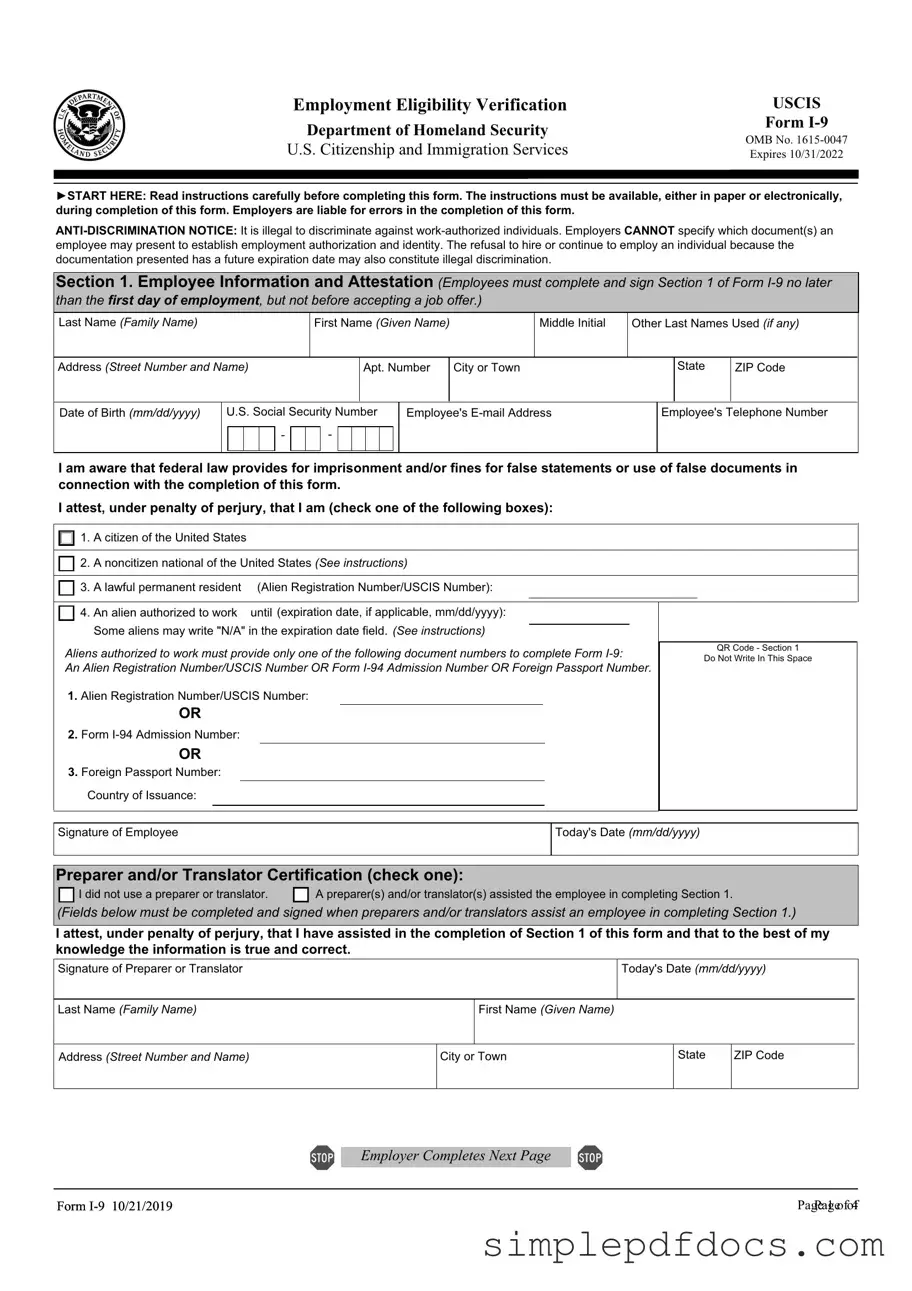Fill Your USCIS I-9 Form
The USCIS I-9 form is a crucial document used to verify the identity and employment eligibility of individuals hired for work in the United States. Employers must complete this form for each new employee, ensuring compliance with federal immigration laws. Understanding the I-9 process is essential for both employers and employees to navigate the complexities of employment verification.
Get Document Here
